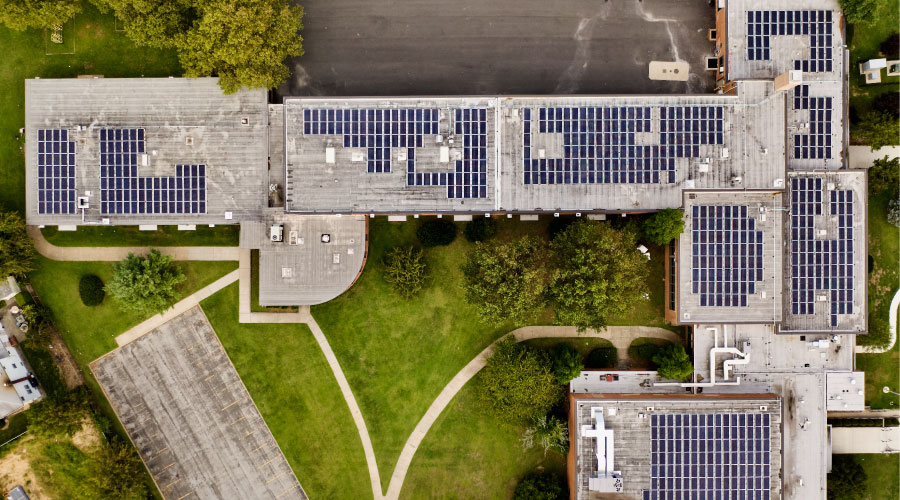Roof Coatings Protect Against UV Light, Leaks, Corrosion
Roofs are expensive to maintain and even more expensive to replace. As part of an aggressive maintenance program, roof coatings applied to a roof system in relatively good condition can extend the system’s service life for many years, delaying replacement.
Coatings provide a renewable surface that protects the underlying membrane from exposure to ultraviolet (UV) light and heat, slowing the roof’s aging process. Highly reflective white coatings also significantly reduce the membrane’s temperature, which leads to improved long-term performance of the system. This lower temperature also reduces the building’s heat load, resulting in lower cooling costs for the building.
Reflective coatings can reflect 60-85 percent of solar energy. But managers should be aware that solar reflectance changes as a coating ages. A high-quality reflective coating can quickly pay for itself in energy savings. White roofs have a tendency to collect dirt, and the amount of dirt typically depends on the roof’s slope, weather conditions, rainfall, and surrounding elements.
Annual walk-overs of the roof system often reveal these conditions. Managers also can schedule crews to power-wash dirty areas regularly and apply an additional coating layer.
Many available coatings contain good waterproofing materials, but seams, fasteners, and areas around penetrations, such as vents and HVAC equipment, require special attention to prevent leaks. Some manufacturers recommend using polyester fabric with their coatings and patching mastics.
Trowel-grade mastics, along with reinforced fabric mesh, can seal seams and other potential leak areas. Self-adhesive tape systems also are available for metal and single-ply systems. These tapes are expensive but offer labor savings, making them acceptable alternatives.
Workers generally can apply coatings easily and quickly over an existing roof surface, but the hardest part of the job often is surface preparation and the repairs required before the application can take place. Again, preventive measures offer benefits: A smaller workforce can perform the repairs and apply the coating, compared to installing a new single-ply, built-up, or metal-roof assembly.
Coatings also can be effective in reducing and controlling corrosion on metal roofs. Where rust exists, crews must completely remove it and use a rust-inhibiting primer or asphalt coating to slow or stop its spread.
Finally, many coatings are environmentally responsible, and workers can apply them with little disruption to facility operations. Using coatings also can help organizations minimize construction debris that results from roof tear-off and replacement.
Related Topics:














